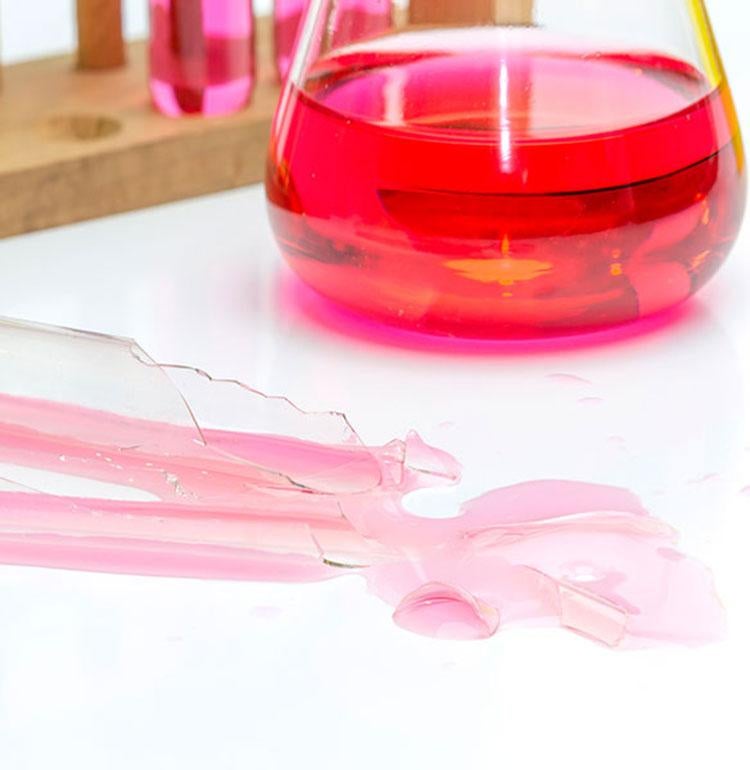Jump menu:
- Section I - General Safety
- Section II - Fire Safety
- Section III - General Lab Safety
- Section IV - Chemical Safety
- Section V - Biosafety
- Section VI - Laser Safety
- Section VII - Respiratory Protection
Section I - General Safety
EHS 01-001 Responsibilities
EHS 01-002 Emergency Information
EHS 01-003 Incidents and Injuries
EHS 01-004 Office Safety
EHS 01-005 Indoor Air Quality
EHS 01-006 Smoking
EHS 01-007 Asbestos
EHS 01-008 Ergonomics
EHS 01-009 Residence Halls
EHS 01-010 Access to Restricted Areas
EHS 01-011 Personal Protective Equipment
EHS 01-012 Fine Arts, Studio Arts & Printing Operations
EHS 01-013 Performing Arts and Special Events
EHS 01-014 Electrical Safety
EHS 01-015 Faculty and Staff Response to Student Injury
EHS 01-016 Shop Safety and Training in Academic Departments
EHS 01-017 Automated External Defibrillators
EHS 01-018 Refrigerant Leak Response
EHS 01-019 Use of Cranes, Hoists, and Slings
EHS 01-020 Pets in the Workplace
EHS 01-021 Roof Safety
EHS 01-022 Tent Safety
EHS 01-023 Waste Handling for Constructions and Demolition Projects
EHS 01-024 Hearing Conservation
Section II - Fire Safety
EHS 02-001 Fire and Emergency Evacuation Procedures
EHS 02-002 Fire Safety and Fire Prevention
EHS 02-003 Flammable and Combustible Liquids
EHS 02-004 Flammable and Pyrophoric Gas
EHS 02-005 Combustible Metals
EHS 02-006 Fire Alarm Fire Protection Outage Procedures
EHS 02-007 Hot Work Program Guidelines
EHS 02-008 Welding and Cutting Guidelines
EHS 02-009 Lithium-Ion Battery Guidelines
Section III - General Lab Safety
EHS 03-001 Laboratory Attire
EHS 03-002 Signage
EHS 03-003 Safety Equipment
EHS 03-004 Shipping
EHS 03-005 Magnetic Safety
EHS 03-006 Cryogens
EHS 03-007 Laboratory Safety Survey Program
EHS 03-008 Animal Exposure Surveillance Program
EHS 03-009 Health and Safety Information for Animal Users
EHS 03-010 Dry Sink Traps
EHS 03-011 Guidelines for Moving Equipment From Biological Laboratories
EHS 03-012 Compressed Gas Cylinders
EHS 03-013 Chemotherapeutic-Antineoplastic Waste Disposal
EHS 03-014 Mercury Handling and Spill Clean Up
EHS 03-015 Ethidium Bromide Disposal
EHS 03-016 Laboratory Electrical Equipment
EHS 03-017 Specimen Transport Between Pitt Research Facilities
EHS 03-018 Glass Disposal Guidelines
EHS 03-019 Guidelines for Nanotechnology Research
EHS 03-020 Working Alone in Laboratories
EHS 03-021 Oxygen Gas Sensor Alarms
EHS 03-022 Guidelines for Radiofrequency Radiation
EHS 03-023 Contact Lenses in the Laboratory
EHS 03-024 Environmental Rooms
EHS 03-025 Guidelines for 3D Printers
EHS 03-026 Lab Safety for PIs
EHS 03-027 Lithium Battery / Cell Shipping
Section IV - Chemical Safety
EHS 04-001 Chemical Hygiene Plan
EHS 04-002 Hazard Communication Program
EHS 04-003 SDS (Safety Data Sheet)/Sample/Glossary
EHS 04-004 Hazardous Waste
EHS 04-005 Chemical Fume Hoods
EHS 04-006 Peroxide Formers
EHS 04-007 Formaldehyde and Paraformaldehyde
EHS 04-008 Carcinogens
EHS 04-009 Reproductive Hazards
EHS 04-010 Hydrofluoric Acid
EHS 04-011 Picric Acid
EHS 04-012 Phosgene
EHS 04-013 Anesthetic Gas
EHS 04-014 Carbon Monoxide Usage in Laboratories
EHS 04-015 Guidelines for Safe Use of Chemical Syringes
EHS 04-016 Photographic Chemicals and Equipment
EHS 04-017 Chemical Relocation Guidelines
EHS 04-018 Chemical Waste Disposal Guidelines
EHS 04-019 Disposal of Empty Chemical Containers
EHS 04-020 Guidelines for Flammable Liquid Disposal
EHS 04-021 Guidelines for High Hazard Gases
EHS 04-022 Guidelines for Working with Powdered Chemicals
EHS 04-023 Aerosol Container Disposal
EHS 04-024 Polyacrylamide Gel Disposal
EHS 04-025 Compatible Chemical Storage Groups
EHS 04-026 Guidelines for Working with Nitric Acid
EHS 04-027 Guidelines for Hydrogenation Reactions
EHS 04-028 Guidelines for the Safe Handling of Azides
EHS 04-029 Cyanide Storage
EHS 04-030 Guidelines for the Safe Use of Ammonia
EHS 04-031 Guidelines for Pyrophoric Liquid Reagents
EHS 04-032 Guidelines for Unknown Chemicals
EHS 04-033 Laboratory Management Plan
EHS 04-034 Safe Use of Piranha Solution
EHS 04-035 Safe Use of Helium
EHS 04-036 Dry Ice Safety
Section V - Biosafety
EHS 05-001 Bloodborne Pathogens Exposure Control Plan
EHS 05-002 Responsibility and Resources for Biosafety
EHS 05-003 Biosafety Guidelines and Biosafety Levels
EHS 05-004 Biological Safety Cabinets
EHS 05-005 Reporting Exposure to Potentially Infectious Material
EHS 05-006 Infectious and Biohazardous Waste Disposal
EHS 05-007 Sharps Disposal Guidelines
EHS 05-008 Safety Engineered Sharps Device Initiative
EHS 05-009 Research Registration for Animal and rDNA Protocols
EHS 05-010 Select Agent Program
EHS 05-011 Serum Surveillance Program
EHS 05-012 Measles Protection
EHS 05-013 Tuberculosis Protection in Research
EHS 05-014 Rabies
EHS 05-015 Vaccinia Virus
EHS 05-016 Lentivirus
EHS 05-017 Biohazardous Spill Cleanup
EHS 05-018 Using Tools/Equipment in BSL-3 Areas
EHS 05-019 Neisseria Meningitidis SOP
EHS 05-020 Yellow Fever Virus SOP
EHS 05-021 Japanese Encephalitis SOP
EHS 05-022 Anthrax SOP
EHS 05-023 Occupational Health Program for BSL-3 Workers
EHS 05-024 HPAI Guidelines
EHS 05-025 Visitors to Animal Research Facilities
EHS 05-026 Novel Coronaviruses
EHS 05-027 Microbiology Lab Guidelines
Section VI - Laser Safety
EHS 06-001 Laser Safety Program
EHS 06-002 Disposal of Lasers
Section VII - Respiratory Protection
EHS 07-001 Respiratory Protection Program
EHS 07-002 Respirable Crystalline Silica

